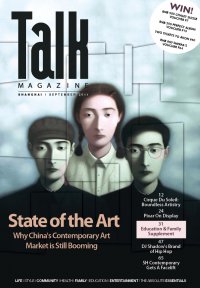Music Worth a Long Haul

In this month’s column, the Ctrip team takes you on a musical journey around China. From the minority twangs of Yunnan province to capital opera in Beijing, this column hits all the high notes.
Chinese music today is a scattered, nascent art form at a very interesting crossroads. The past is rife with operatic styles, rich lyrical pieces and exceptional instruments, but a lot of the history has been obscured, codified, diluted and homogenized. Modern Chinese music suffers from sell-outs and a lack of focus from local musicians (think Detroit’s Motown phenomenon). So if you want to see and hear Chinese music in its pure, raw form, then you’ll have to travel a bit and poke your nose into some corners.
Beijing is a logical start to any trip around China, especially a music-themed one. Peking opera is probably the most recognized classical Chinese musical form, and one of the more exotic sounds to western ears. Beijing is also the birthplace of Chinese rock music. Dozens of excellent live music venues around the city host a number of bands vying for their shot at the limelight. Annual festivals that began in Beijing now radiate across the nation and artists from around the country looking to make it big head to the capital.
Another city with a good mixture of classical operatic styles and modern music is Chengdu. Sichuan opera, a fiery offshoot of Beijing opera, is famous for face changing and fire-breathing, and the local rock and modern music scene – based around the Little Bar – is established, cutting edge and punches above its weight.
There is a lot of music available to the traveller heading south from Chengdu toward Yunnan. The famous tourist town of Lijiang is home to one of the oldest musical traditions; the Naxi minority big band play a version of old Tang and Yuan dynasty Taoist dirges that you can hear nowhere else. Kunming, the capital of Yunnan, has a great modern music scene going on and sees a good mixture of styles, from reggae Rastas coming up from Southeast Asia to Mongolian drummers enjoying the Kunming sun to French-Canadian bluegrass bands with a pronounced punk tint.
Xinjiang’s Uigher minority produces a lot of excellent music in a classic Central Asian style, and all of that music is accessible in the capital, Urumqi – through CD purchases, performances at the International Grand Bazaar, or more intimate concerts at Muslim restaurants like Miraj. Another good place to see, hear and buy that music is in Kashgar, where you can still buy tapes and eight-tracks of classic Uigher singers in the back-alleys of the bazaar and listen to them play in restaurants and cafes tucked away in the streets around the Old City.
Now teleport all the way across the country to the Wu Kingdom, which consists of a list of Zhous (Suzhou, Hangzhou, Wenzhou, and Yangzhou) and one Hai (Shanghai). The Wu region was the center of Ming and Song dynasty power and culture, making it also one of China’s most important cultural cradles. Kunqu opera was developed here and this stately, elegant form is considered the “mother of all Chinese operas”. Watching a performance in Hangzhou after a walk around the West Lake – or in Suzhou after a tour of the canals – will take you back to those heady Imperial days when barbarians were far away and the emperor ruled all.
Sascha Matuszak is an editor at the Ctrip-sponsored Chinatravel.net and a frequent contributor to Chengduliving.com and the South China Morning Post.


